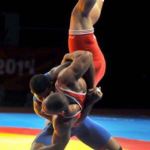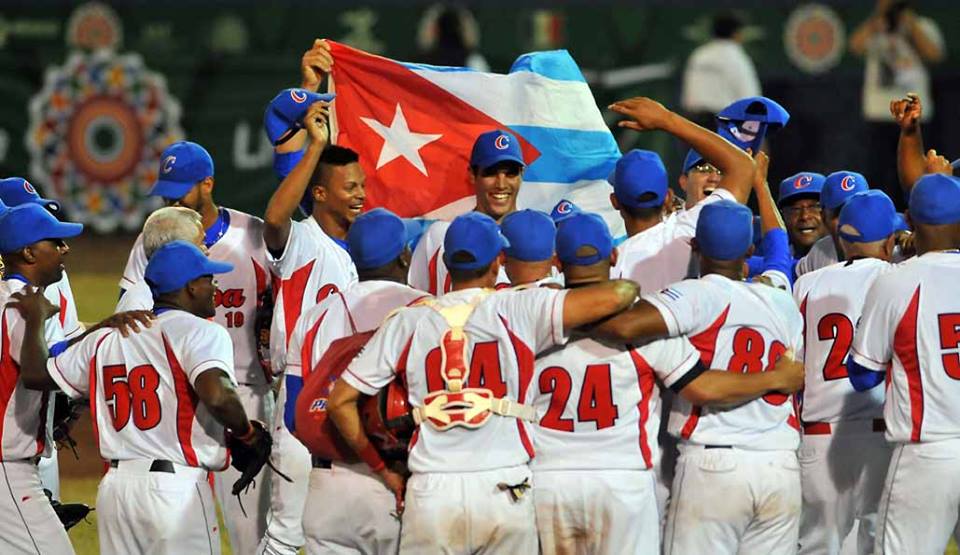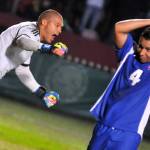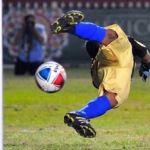
Veracruz 2014: Shades of a triumph
HAVANA — It was necessary to wait until the next-to-last day of competition and appeal to our sports flagships to concretize the victory, but Cuba finally amassed the most medals at the 22nd Central American and Caribbean Games.
The aggregate of 123 gold, 66 silver and 65 bronze medals was sufficient to send to second place the Mexican organizers, who attended the competition with representation in all the disciplines and the largest delegation at the Games — more than 700 athletes.
However, an analysis of these just-concluded Games must be deeper, because — although by now seemingly distant and forgotten — the 115 titles achieved by Mexico challenged Cuba’s sports hegemony in the region and turned Veracruz 2014 in the hardest-fought regional competition in the past 44 years, with 56 new records.
In fact, if we disregard the 1946 edition, held in Barranquilla, Colombia, when Cuba won first place with 29 gold medals, vs. 26 for Mexico, this year saw the narrowest gap between Mexico and Cuba, top medal winner since 1970, when it began a tour of victories that was interrupted in San Salvador (2002) and Mayagüez (2010).
Therefore, Veracruz was not an overwhelming victory, such as the ones we became accustomed to in Central America, a region that for decades was the recreation yard for our athletes. Rather, the meet poses numerous questions for the immediate future, above all, those regarding Cuba’s possible placement in the Pan-American Games of 2015.
Another revealing fact is that Cuba dominated the Games at Ponce ’93 and Maracaibo ’98 with 161 and 191 gold medals, respectively. Then came the Cuban absence in 2002 and, upon our return, we continued to be the kings, but in Cartagena 2006 we earned only 32 titles more than Mexico. Mayagüez 2010 was another Cuban absence, one that the Mexicans took advantage of.
Eight years after our previous rise to the Central-Caribbean throne, the distance has been reduced by 75 percent — from 32 medals to only 8.
The keys to victory
As always, Cuba bet on its strongest disciplines, which provided the definitive boost and kept Mexico from taking off too fast in a medal race that it dominated until two days before the closing ceremony.
With 23 titles, the athletics competition had a spectacular closing, effectively offsetting the Aztec advances in disciplines like diving and squash rackets. Before departing for Mexico, the Cuban track-and-field representatives had set as their goal matching the 18 medals they won in 2006. Fortunately, they went beyond, with some unexpected gold medals, such as the ones won by Andy González (800 and 1,500 meters) and Sergio Mestre (high jump).
Add to that the fact that the squads of Caribbean sprinters (Jamaica, Trinidad & Tobago, Bahamas) were not summoned to the starting lineups and, when they were, they participated with fifth- and sixth-rank figures. In reality, only Cuba and Mexico went to the Games with their leading athletes, the former in order to regain the throne, the latter in order not to fall again before the Antilleans.
Another outstanding discipline was rowing, where Cuba gave no quarter and won the 10 crowns in dispute at Mandinga Lake, exceeding the expectations set for the rowers led by Angel Fournier, twice world medalist.
Shooting provided 14 gold medals and Cuba was also a leader in the specialty even though it didn’t compete in the pit modalities. Although that number also was above expectations, the truth is that it could have been higher, because in feminine rifle the Cuban women could not participate as a team after Lianet Aguiar left the delegation in the middle of competition.
Wrestling crowned 10 Cubans, while four didn’t participate. Boxing was decisive, with nine titles in ten divisions, no doubt a performance at the level of the squad that won the World Series of AIBA.
As if that weren’t enough, cycling provided eight gold medals and the memorable performances of Lisandra Guerra and Marlies Mejías, the latter winning an unprecedented five crowns, something never before achieved at a meet by a cyclist.
Not unexpectedly, judo gave us 13 first places, one under the figure predicted at gatherings before the competition, but enough to lead the countries in this sport. In addition, rowing and weight-lifting were of great importance, giving us 8 and 7 medals, respectively.
In sum, the difference with Mexico could have been greater — taking into account the defections from the delegation — judging from the quality shown. Fortunately, I repeat, the Caribbean sprinters did not attend a meet planned for the end of the competition year, for which only two squads trained seriously.
Whether it was the performance of Andy González, who won the 1,500 meters two days after winning the 800, Mestre’s unexpected leap (2.26 meters), his life’s best, or Marlies’ and Lisandra’s cycling, the memorable moments of Cuba in Veracruz came from the collective sports.
In chronological order, the women’s handball team sought the gold fiercely and displayed an offensive power that their rivals could not counter. No doubt, we’re seeing a generation of handball players that could take us back (both sexes; the men took bronze) to stellar levels in this sport.
Then came the overwhelming demonstration of women’s basketball, a team unbeaten since 1970 in regional meets. The champions of Centrbasket 2014 and FIBA Americas 2013 won their 10th crown without difficulty.
Field hockey (men and women) was unsullied after a long period of absence in international competition, which makes the job of technicians and athletes praiseworthy in a discipline that, in Cuba, has only one stadium in acceptable conditions.
Baseball did its thing and won. A roster full of star players could produce no other result in this meet, where none of the other participants included its best men, following the example of other sports. To be fair, one reason that they couldn’t do it is that the Winter Leagues are beginning and the MLB, with 160 games, exhausts any ball player.
Special mention should be made of Cuban swimmer Hanser García, who, with 15 days training after recovering from dengue fever, finished first in the 100 meters freestyle, setting a record for the meet.
No one should doubt which sport made our country vibrate with amazement and emotion. A bronze medal confirmed that soccer in Cuba is not a disorganized guerrilla of strong but erratic legs. The demonstration made against the archfavorite Mexicans convinced us that nothing elicits shouts and tears like a national team.
The magnificence of the Cuban soccer players goes beyond the medal. It lies in having shone in a tourney that included Mexico, Honduras, Costa Rica and Venezuela, with their best under-23 players.
On the night of Nov. 26, we Cubans would have given up our gold medals, forgotten the defections and the titles lost; we would have even renounced to baseball for three days if the penalty shootouts weren’t the roulette they are.
The team led by Raúl González Triana was defeated in a penalty shootout, 7-6. The image I will most proudly carry in my memory is the tears of Yolexis Collado after he kicked the ball directly at the Mexican goalie. That night I irremediably gave up baseball.








